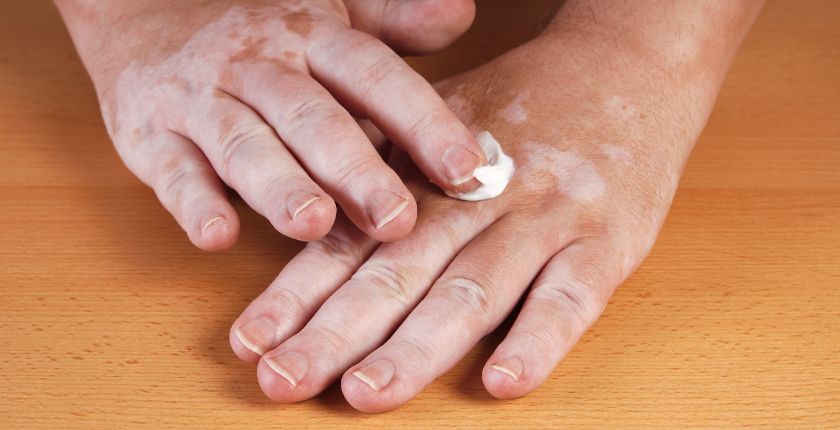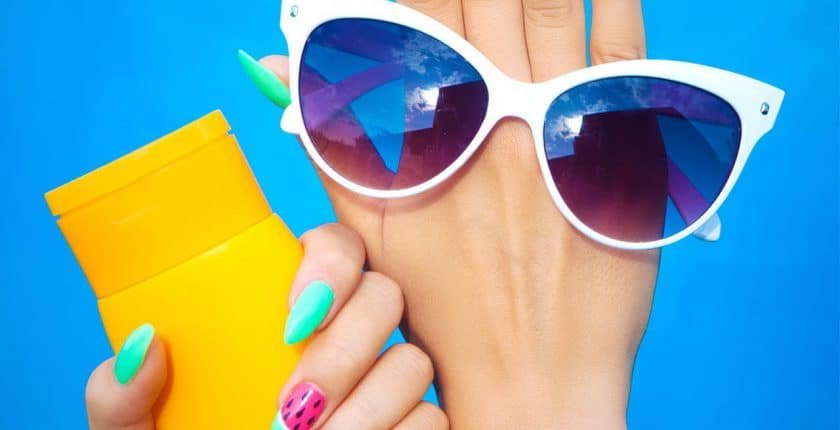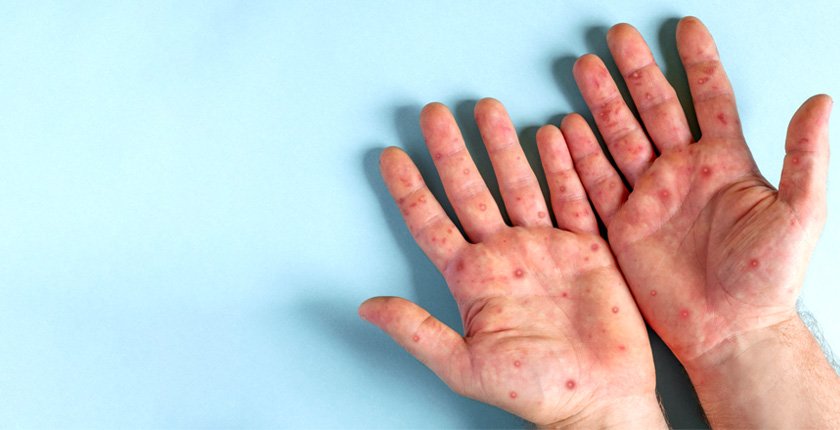

WINTER SKINCARE FOR VITILIGO: TIPS TO PREVENT DRYNESS AND FLAKING
Introduction
Winter can be harsh on the skin, especially for individuals with vitiligo. This autoimmune condition causes the loss of pigmentation, making the skin more vulnerable to environmental changes, particularly the dry and cold winter weather. This blog explores essential skincare practices for vitiligo patients to prevent dryness and flaking and ensure their skin stays healthy and comfortable.
What is vitiligo?
Vitiligo is a long-term skin condition characterized by the loss of melanin, the pigment that gives skin its color. This results in white patches appearing on various parts of the body. While the condition is not contagious or life-threatening, it can significantly impact on individual’s confidence and quality of life. Vitiligo is an autoimmune condition that causes skin areas to lose color. Melanocytes, which create pigment, are attacked and killed, turning the skin milky white. Color or pigment loss can occur quickly and cover a big region. The segmental subtype of vitiligo, which affects one leg, face, or arm, is rarer. This kind of vitiligo starts early, develops for 6–12 months, and then ceases to expand but persists. Your immune system normally fights viruses, germs, and illness. In autoimmune illnesses, immune cells mistakenly assault healthy tissues. Vitiligo may occur with other autoimmune diseases. A vitiligo patient may have relatives with the condition. Vitiligo has no cure, although treatments can stop and reverse its development, making skin tone more equal.
Impact of Winter on Vitiligo Skin
Why Winter Skincare is Essential for Vitiligo Patients?
Winter poses unique challenges for vitiligo-affected skin. The lack of humidity in the air and exposure to cold temperatures can exacerbate dryness and flaking, making proper skincare a necessity. Individuals with vitiligo can maintain their skin’s health and minimize discomfort by adopting a tailored skincare regimen.
Why Winter Causes Dryness and Flaking?
During winter, the air becomes drier, and the vitiligo skin loses moisture more rapidly. This dryness is particularlypronounced in vitiligo-affected areas, where the skin’s natural barrier is already compromised.
Challenges Faced by Vitiligo Patients in Winter
- Increased dryness and flaking: Vitiligo patches lack melanin, making them more susceptible to dryness.
- Heightened sensitivity: Cold weather can exacerbate skin sensitivity, leading to irritation and discomfort.
- Difficulty in finding suitable products: Many skincare products contain irritants that can worsen vitiligo symptoms.
Winter Skin Care for Vitiligo: Tips and Practices
Moisturising Techniques for Vitiligo Winter Skin Care
- Use a thick, emollient-based moisturizer immediately after bathing to lock in moisture.
- Reapply moisturizer throughout the day, especially after washing your hands or face.
- Consider using products with natural oils like shea butter or coconut oil for deep hydration.
Choosing the Right Winter Skin Care Products
- Opt for fragrance-free and hypoallergenic products.
- Look for ingredients like ceramides, hyaluronic acid, and glycerin.
- Avoid harsh soaps and alcohol-based cleansers that strip the skin of natural oils.
How to Protect Vitiligo on Lips from Cracking
- For on the lips, use a hydrating lip balm with SPF to prevent dryness and sun damage.
- Avoid licking your lips, as this can worsen cracking.
- Apply a layer of petroleum jelly before going out in cold weather, and reapply as needed.
Lifestyle Tips for Managing Vitiligo in Winter
Diet Suggestions for Healthy Skin
- Incorporate foods rich in antioxidants like berries, spinach, and nuts.
- Consume foods high in zinc and vitamin C to support skin health; contrary to the belief Vitamin C rich foods are good for Vitiligo patients.
- Avoid processed foods and limit sugar intake to reduce inflammation.
Staying Hydrated and Managing Stress
- Drink plenty of water throughout the day to maintain skin hydration.
- Practice stress-relief techniques like yoga or meditation, as stress can exacerbate vitiligo symptoms.
Vitiligo on Lips and Other Sensitive Areas
Special Care for Vitiligo on Lips
Vitiligo on lips requires extra care during winter due to its delicate nature. Regularly applying protective balms and avoiding exposure to extreme temperatures can help maintain their health.
Treatment Approaches for Delicate Skin
- Use gentle, dermatologist-recommended products on sensitive areas.
- Avoid exfoliating products that may irritate.
Preventing Dryness and Flaking in Vitiligo Skin
Home Remedies to Soothe Dry Vitiligo Skin
- Apply aloe vera gel to affected areas for natural hydration.
- Use a humidifier at home to maintain moisture levels in the air.
- Create a DIY mask with honey and yogurt for a soothing effect.
Gentle Cleansing Practices to Avoid Irritation
- Wash your skin with lukewarm water rather than hot water.
- Use a mild, non-foaming cleanser to avoid stripping the skin’s natural oils.
- Pat the skin dry with a soft towel instead of rubbing.
Conclusion
Winter can be challenging for vitiligo patients, but with the right skincare regimen and lifestyle adjustments, it is possible to keep the skin healthy and comfortable. Individuals can confidently navigate the colder months by understanding the unique needs of vitiligo-affected skin and adopting preventive measures. If anyone is suffering from such a problem, it is advised to for better healthcare with care and compassion. For more information visit website
FAQs
1. Can vitiligo get worse in winter?
Yes, winter’s dry air and cold temperatures can exacerbate dryness and flaking, making proper skincare essential.
2. What moisturizer is best for vitiligo in winter?
Choose a thick, fragrance-free moisturizer with ingredients like ceramides or hyaluronic acid to hydrate and protect the skin.
3. Are there specific foods that help improve vitiligo?
Foods rich in antioxidants, zinc, and vitamin C can support skin health and potentially reduce inflammation.
4. How can I protect my lips affected by vitiligo during winter?
Use a hydrating lip balm with SPF and apply petroleum jelly before heading out in cold weather.
Lorem ipsum dolor sit amet, consectetur adipiscing elit. Ut elit tellus, luctus nec ullamcorper mattis, pulvinar dapibus leo.







